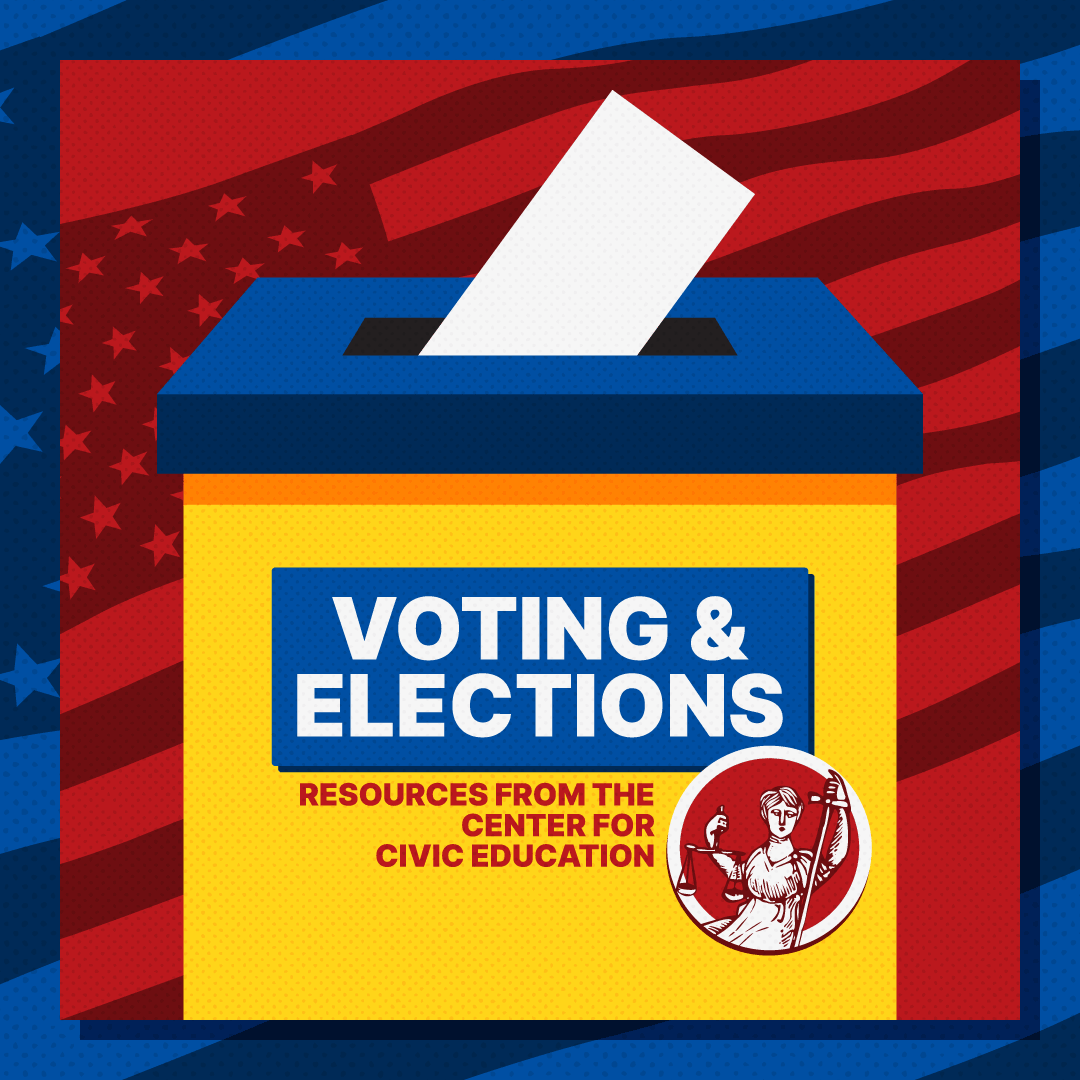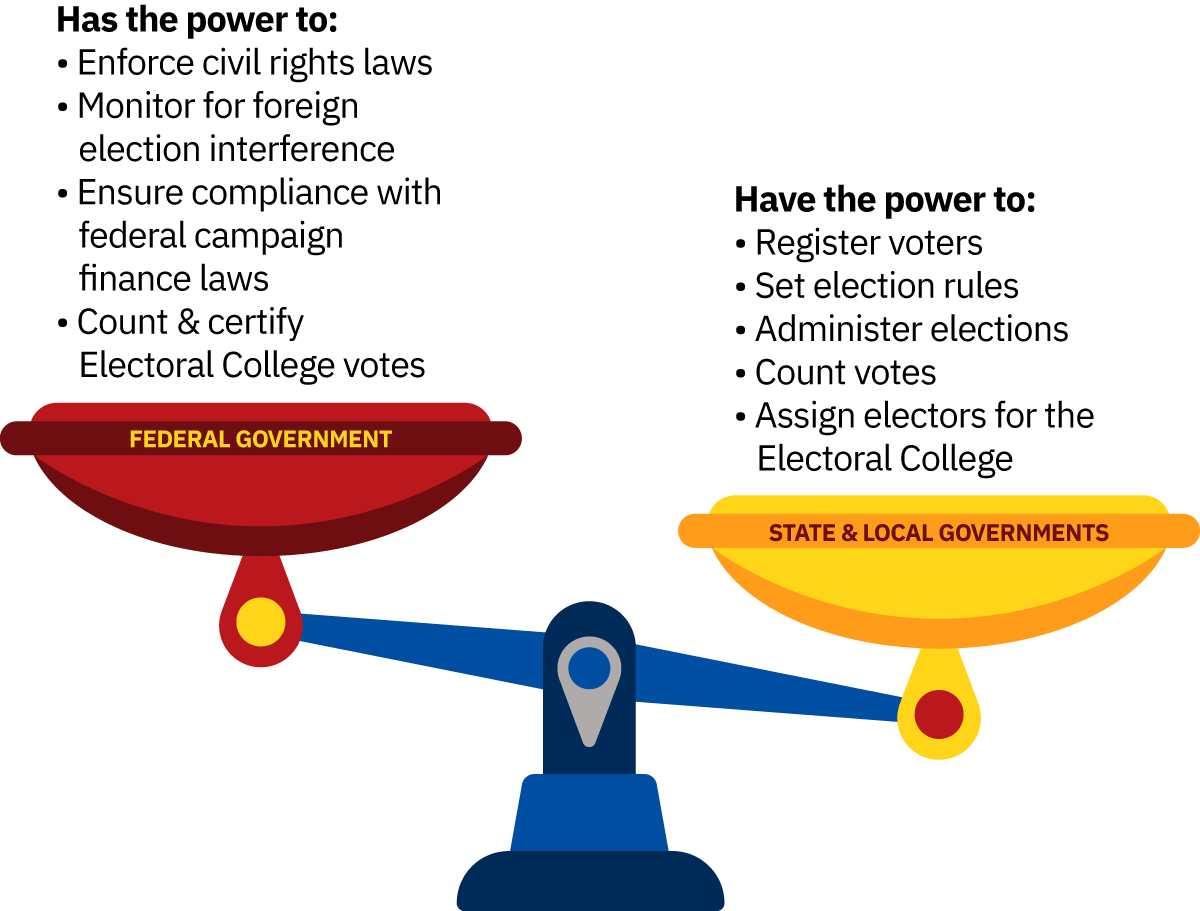
Voting and Elections
Did You Know?

Elections have consequences. If you want a say in the political future of our nation, it is up to you to get involved. Luckily, there are many ways to accomplish this. Listen to learn how!
Two incidents in 1970 galvanized the movement to lower the voting age to eighteen: the Kent State and Jackson State shootings of anti-war demonstrators.
Thomas Paine, with his characteristically sharp wit, pointed out some problems with the property requirement for voting.
Federalism & Election Laws

The Shelby County v. Holder (2013) outcome signaled a significant turning point for voting rights in the United States. In a 5-4 decision, the Supreme Court ruled in favor of Shelby County, Alabama, which argued that the preclearance requirement was outdated and unfairly targeted certain jurisdictions based on decades-old data. The Court's majority opinion, written by Chief Justice John Roberts, held that the coverage formula used in Section 4(b) of the 1965 Voting Rights Act, which determined which jurisdictions were subject to preclearance under Section 5, was unconstitutional. The Court reasoned that the formula was based on outdated data and, therefore, violated the principle of equal sovereignty among states.
Without the preclearance requirement, jurisdictions are no longer required to seek federal approval before changing their voting laws or procedures unless those changes were found to be discriminatory through other legal challenges. According to the Brennan Center for Justice, “between January 1 and May 29, 2023, at least 11 states enacted 13 restrictive laws. Of these laws, seven curb access to mail voting, and six implement stricter photo ID requirements for voter registration or in-person voting. (Voting Laws Roundup: June 2023 | Brennan Center for Justice). Restrictive legislation makes it harder for eligible Americans to cast their ballots.
This theme of voter suppression can also be examined through the lenses of gerrymandering, the undercounting of undocumented individuals in census data, and the disenfranchisement of incarcerated individuals. Movements in the U.S. still strive to ensure that the right to vote is universally accessible.
Evolving Voting Rights
Not all U.S. citizens have always enjoyed universal suffrage. While the Preamble opens with “We the People,” not all people have the right to vote. Initially, the Constitution left it to each state to decide who could vote. This essentially led states to have different qualifications for voting, but almost all restricted voting to white men who met particular property and residency requirements.
Disenfranchised individuals have included women, Black Americans, Indigenous peoples, landless men, immigrants, and certain incarcerated individuals. Over the last 150 years, legislative, judicial, and executive actions have been taken to end voter suppression, yet we still have work to do to ensure all Americans have the right to vote.
1788: Constitution Ratified
1870: 15th Amendment
Grants right to vote to African American men
1887: Dawes Act
Authorizes federal government to break up tribal lands into individual plots; only those Native Americans who accepted the individual allotments were allowed to become U.S. citizens
1920: 19th Amendment
Granted right to vote to women
1924: Indian Citizenship Act
Grants citizenship to all Native Americans born in the U.S.
1965: Voting Rights Act
Prohibits election practices that deny vitizens the right to vote
1971: 26th Amendment
Lowers the voting age to 18-years-old
2013: Shelby v. Holder
Supreme Court rules a section of the Voting Rights Act unconstitutional, allowing states to avoid federal scrutiny of changes to voting laws
Several constitutional amendments and acts of Congress were crucial in expanding suffrage rights. The 15th Amendment, ratified in 1870, prohibited the denial of voting rights based on race or color and aimed to enfranchise African American men after the Civil War. The 19th Amendment, passed in 1920, granted women the right to vote. The Indian Citizenship Act of 1924 gave the right to vote to all “Indians born within the territorial limits of the United States.”
The 24th Amendment, ratified in 1964, abolished poll taxes as a requirement for voting, removing a barrier that disproportionately affected African American voters in the South. The Voting Rights Act of 1965 was a landmark piece of legislation of the Civil Rights movement that aimed to eliminate discriminatory practices, such as literacy tests and other impediments to prevent people of color from voting.
Additionally, the 26th Amendment, ratified in 1971, lowered the voting age to 18, recognizing the right to vote for citizens who could be drafted into the military and fight in the Vietnam War.






